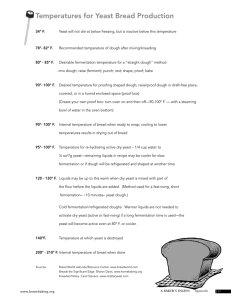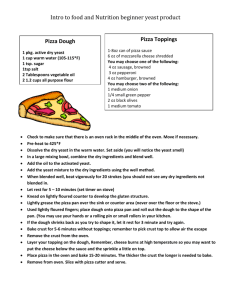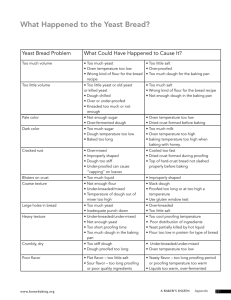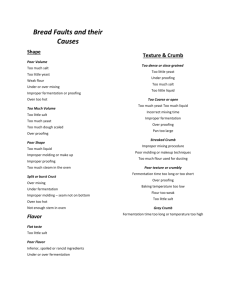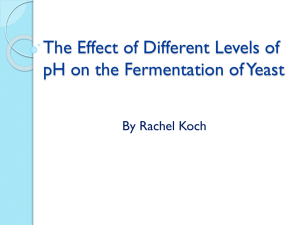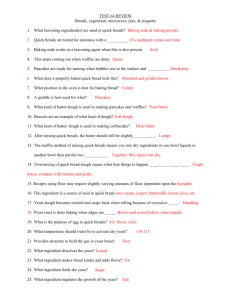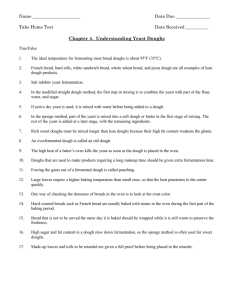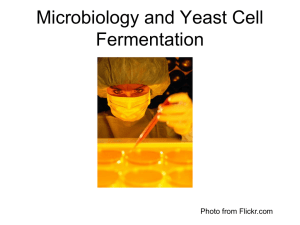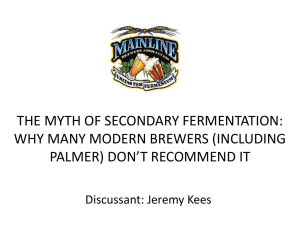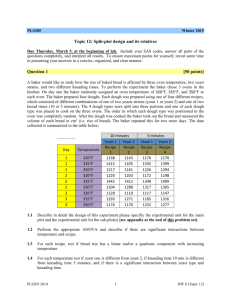YEAST BREADS
advertisement
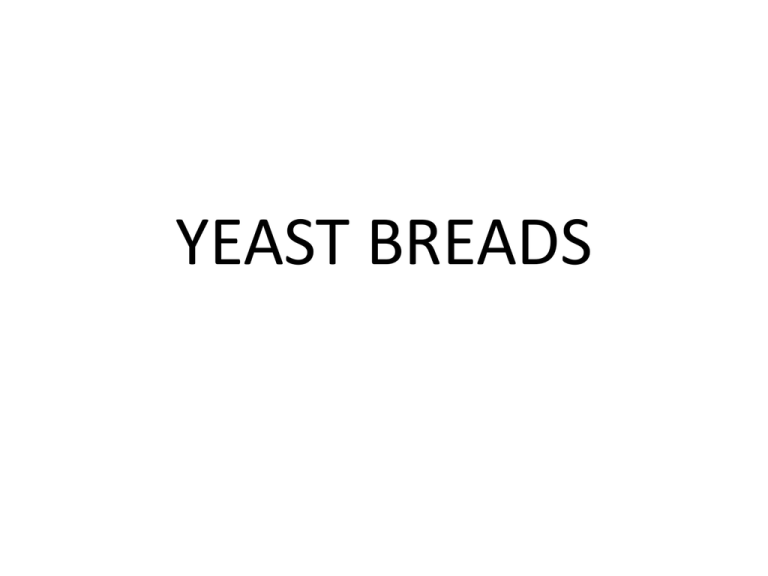
YEAST BREADS 3 CLASSES OF YEAST BREADS •Rolls •Loaves •Deep-fat fried BASIC INGREDIENTS INGREDIENT • Flour • Yeast • Liquid • Salt • Sugar • Fat • Eggs FUNCTION Body/Structure Leavening (rise) Binder, moistens Flavor, controls yeast Flavor, feeds yeast Tenderizes, aids browning Structure, flavor, richness Characteristics of Yeast • Must have warmth, moisture, food • Is a living organism • Will die if subjected to too much heat Food Science Principles of Yeast Breads • Fermentation – Yeast breaks down into sugar and energy – Longer, slower fermentation = better flavor – Change the rate of fermentation by: • Temp of dough • Amount of salt • Amount of sugar • Amount of yeast Food Science Principles Cont. • Kneading –Distributes yeast throughout dough –Develops gluten (proteins in flour) –Too much kneading will cause the dough to lose flavor after it is baked –The dough has been kneaded enough when it stretches like bubblegum Food Science Principles Cont. • Proofing – The ‘rising’ process – the dough ‘puffs up’ – Can speed up process by use of a ‘proof box’ • Shaping – Using the hands to mold the dough into the shape of loaf or roll that one desires Food Science Principles Cont. • Baking/Oven Spring – Use correct temperature – Choose correct size pans – Prepare the pans – Bake the product – Oven Spring – one last jump inn size in the oven before the yeast is killed – Remove baked product from pans, place on cooling rack Proof Box at Home • Place a shallow pan of hot water on the lowest shelf in the oven (proof box). • Turn on the (proof box) to the lowest temperature. • Place product in the oven (proof box) and allow to rise to the proper height. • Remove product from oven (proof box). • Remove the water from the oven (proof box). • Turn temperature to baking temperature, allow to rise to that temperature. • Place product back into oven to bake.
